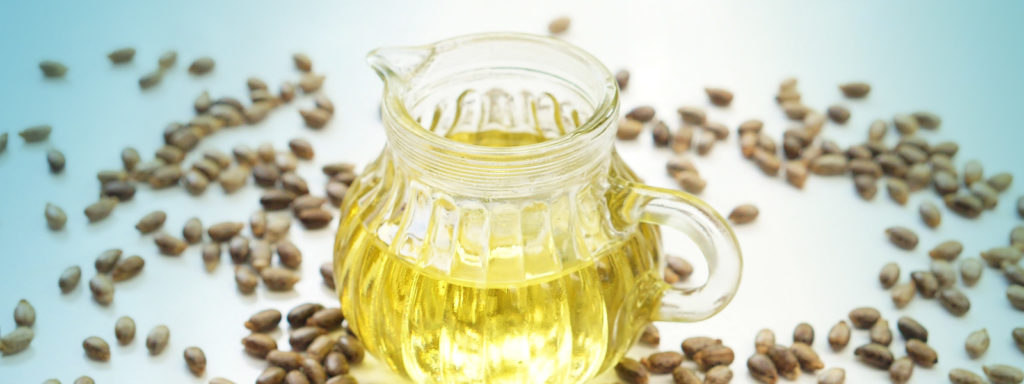Castor oil (lat. Oleum Ricini, castor oil) has an ancient history. After all, it has been known since ancient Egypt. According to legend, he was called Palma Christi or the palm of Christ. Castor oil received this name due to the form of castor leaves and its remarkable ability to heal wounds.
The uniqueness of castor oil is due to its chemical composition. It consists of fatty acids, their derivatives and vitamin E. Moreover, about 90% is ricinoleic acid, noted for its unique healing properties. Fortunately, castor oil has not been lost for centuries and remains relevant today, having found widespread use for medicinal purposes and cosmetology.
Properties of Castor oil:
- Natural moisturizer and tonic
- Wound healing (burns, wounds, bruises)
- Pain relief (joint, muscle pain, rheumatism, gout)
- Anti-inflammatory and antibacterial
- Effective against eczema and acne
- Antifungal (some studies have shown that castor oil can help fight fungal infections in the mouth caused by Candida albicans.)
- Stimulates the growth of hair, eyelashes and eyebrows.
These and many other properties have been confirmed by studies in the field of naturopathic medicine and pharmacology.
Castor oil is the right, and maybe even an indispensable choice for your home medicine cabinet.
References:
- Duke JA. Ricinus Communis L. Handbook of Energy Crops. Unpublished; 1983. Available at: http://www.hort.purdue.edu/newcrop/duke_energy/Ricinus_communis.html. Accessed April 9, 2013.
- Felter HW. Oleum Ricini. The Eclectic Materia Medica, Pharmacology and Therapeutics; 1922. Henriette’s Herbal Homepage. Available at: http://www.henriettes-herb.com/eclectic/felter/ricinus_oleu.html. Accessed April 9, 2013.
- McGarey WA. The Oil That Heals: A Physician’s Successes with Castor Oil Treatments. Virginia Beach, VA: A.R.E. Press; 1993.
Vieira C, Evangelista S, Cirillo R, et al. Effect of ricinoleic acid in acute and subchronic experimental models of inflammation. Mediators Inflamm. 2000;9(5):223-228. - Vieira C, Fetzer S, Sauer SK, et al. Pro- and anti-inflammatory actions of ricinoleic acid: similarities and differences with capsaicin. Naunyn Schmiedebergs Arch Pharmacol. 2001;364(2):87-95.
- Arslan GG, Eser I. An examination of the effect of castor oil packs on constipation in the elderly. Complement Ther Clin Pract. 2011;17(1):58-62.
- Grady Harvey. Immunomodulation through castor oil packs. Journal of Naturopathic Medicine. Unknown year; 7(1):84-89.
Schmidt RE, Caulfield JP, Michon J, et al. T11/CD2 activation of cloned human natural killer cells results in increased conjugate formation and exocytosis of cytolytic granules. J Immunol. 1988;140(3):991-1002. - Kennedy DA, Keaton D. Evidence for the Topical Application of Castor Oil. Int J Nat Med. 2012;5(1).
Mein EA, Richards DG, McMillin DL, Nelson CD. Transdermal absorption of castor oil. Evid Based Integrative Med. 2005;2(4):239-244.
